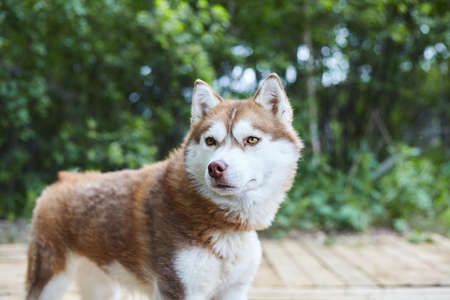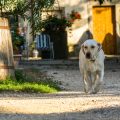Understanding British Dog Breeds and Their Activity Needs
When it comes to creating the perfect exercise routine for your beloved pup, understanding the unique nature and heritage of British dog breeds is essential. The United Kingdom is home to some of the world’s most cherished breeds, each with distinct personalities and physical requirements. For instance, the ever-loyal Labrador Retriever, the quick-witted Border Collie, and the stoic English Bulldog all hail from these green isles, but their exercise needs couldn’t be more different.
| Breed | Energy Level | Recommended Exercise | Special Considerations |
|---|---|---|---|
| Labrador Retriever | High | 1-2 hours daily, including walks, swimming, and fetch | Loves water; benefits from varied activities to prevent boredom |
| Border Collie | Very High | 2+ hours daily, agility training, herding games, off-lead runs in secure areas | Mental stimulation as important as physical; excels at tasks and puzzles |
| English Bulldog | Low to Moderate | 20-40 minutes gentle walks per day; avoid overexertion, especially in warm weather | Brachycephalic (short-nosed); prone to overheating; needs careful monitoring during activity |
Each breed’s historical role — from retrieving game on misty moors, to managing sheep on rugged hillsides, or simply providing steadfast companionship — shapes what keeps them healthy and happy today. A tailored exercise routine isn’t just a nicety; it’s a necessity for their wellbeing. Matching activities to your dog’s breed-specific instincts helps prevent behavioural issues, supports heart health, and strengthens your bond. As you explore routines for your four-legged friend, remember: thoughtful care rooted in understanding their heritage will always be at the heart of a truly British approach.
Factoring in the British Weather and Local Environments
When designing an exercise routine for your British dog breed, it is essential to embrace the ever-changing UK weather and the unique landscapes that define our countryside and urban spaces. Rainy days and unpredictable temperatures needn’t dampen your spirits or your dog’s enthusiasm. Instead, with a little creativity and local knowledge, you can turn every outing into a joyful adventure—come rain or shine.
Adapting to Typical UK Weather
British weather is famously fickle, but don’t let drizzle or a chilly breeze put you off. Invest in waterproofs for both you and your dog—a waxed jacket for yourself and a comfortable dog coat for your companion can make all the difference. On particularly wet days, opt for shorter, more frequent walks to avoid getting too cold or muddy. Alternatively, indoor games such as hide-and-seek or scent work can help burn off excess energy when venturing out isn’t practical.
Making the Most of Local Environments
| Environment | Exercise Ideas |
|---|---|
| Rural Fields & Farmland | Recall training, fetch sessions, and gentle jogs along bridleways (be mindful of livestock and follow Countryside Code) |
| Woodlands | Nosework games, exploring new trails, supervised off-lead play (check for seasonal hazards like blue-green algae in ponds) |
| Parks & Greenspaces | Group walks, agility practice using natural features (benches, logs), socialisation with other dogs |
| Urban Spaces | Lead walks on pavements, stair climbing in multi-level parks, obedience drills during quieter hours |
Tips for Every Setting
- Always check local regulations regarding lead use and restricted areas.
- Bring biodegradable poo bags to keep shared spaces clean.
- Praise positive interactions with people and other dogs—these are opportunities to nurture good manners as well as fitness.
The British landscape offers countless ways to enrich your dog’s life through movement, exploration, and connection with the world around them. By adapting routines to suit both the weather and environment, you’ll foster not just physical health but also deep joy—for both you and your loyal companion.
![]()
3. Designing a Balanced Daily Exercise Plan
Creating the ideal exercise routine for your British breed means more than just daily strolls around the block. To ensure your dog’s happiness and well-being, a blend of walking, running, and play tailored to their age and breed is essential. A balanced plan prevents boredom, promotes good behaviour, and supports joint health—especially important for beloved breeds like the Labrador, Border Collie, or Cocker Spaniel.
A Weekly Template for Every British Dog
Below is a sample weekly exercise template, designed with both energetic pups and dignified older dogs in mind. Adjust timings and activities according to your dog’s specific needs, always keeping an eye on safety and avoiding overexertion.
| Day | Puppies & Seniors (Low Impact) | Adult Active Breeds | Adult Calm Breeds |
|---|---|---|---|
| Monday | Short walk (15 mins) + gentle indoor play | Morning brisk walk (30 mins) + fetch in park (20 mins) | Moderate walk (25 mins) + puzzle toys at home |
| Tuesday | Garden exploration + gentle tug game | Jogging (20 mins) + agility training (15 mins) | Leisurely walk (30 mins) + hide-and-seek indoors |
| Wednesday | Short woodland stroll (20 mins) | Hiking trail (45 mins) + water play if safe | Pavement walk (30 mins) + quiet cuddle time |
| Thursday | Scent games at home + gentle stretching | Sprint intervals in field (15 mins) + ball games (20 mins) | Park walk (25 mins) + slow-paced playtime |
| Friday | Short walk (10-15 mins) + rest day treats | Countryside walk (40 mins) + tug-of-war (10 mins) | Neighbourhood stroll (25 mins) + chew toys session |
| Saturday | Interactive play indoors + garden time | Dog social meet-up or group walk (1 hour) | Lawn walk (30 mins) + relaxation in sun |
| Sunday | Cosy day: gentle brushing & bonding time | Mild hike or long park adventure (up to 1 hour) | A gentle amble outside + afternoon nap together |
Tips for Safety and Variety in Your Routine:
- Mornings or Evenings: In true British style, avoid midday heat or wet chill by timing walks early or late.
- Paws on Pavement: Always check temperature and avoid salt-gritted roads in winter.
- Mental Stimulation: Mix in training sessions or food puzzles to keep sharp minds engaged.
- Bespoke Adjustments: For flat-faced breeds like Bulldogs, keep activities short and monitor breathing. For working breeds like Collies, up the mental challenge.
This thoughtful approach ensures every wagging tail—whether young or old—enjoys a life full of joyful movement across the UK’s green spaces.
4. Incorporating British Traditions and Community Resources
Creating an enriching exercise routine for your British breed doesn’t have to be a solitary pursuit. Embracing the spirit of community, so deeply woven into British culture, brings countless benefits for both you and your canine companion. By tapping into local traditions and resources, you not only provide varied experiences for your dog but also nurture connections that strengthen neighbourhood bonds and support wider wellbeing.
Dog-Friendly Cafés and Public Spaces
Across the UK, dog-friendly cafés are thriving hubs where dogs can socialise while their owners enjoy a cup of tea or coffee. These establishments often offer water bowls, treats, and even dedicated play areas. Regular visits help dogs become accustomed to different people, scents, and sounds—key elements for socialisation. Why not organise a meet-up with fellow dog owners at your local café? It’s a gentle way to introduce young or shy dogs to the bustle of British life.
Local Dog Clubs and Training Groups
Many towns and villages host dog clubs or training groups that cater specifically to British breeds. Whether it’s agility classes for Border Collies or gundog training sessions for Labradors and Spaniels, these gatherings are rooted in centuries-old traditions. Joining such groups helps reinforce breed-specific skills while fostering camaraderie among local pet lovers. Take a look at some examples below:
| Community Resource | Typical Activities |
|---|---|
| Dog-Friendly Pubs & Cafés | Social walks, relaxed meet-ups, charity events |
| Breed-Specific Clubs | Agility training, obedience classes, breed shows |
| Local Parks & Commons | Group walks, off-lead play, seasonal festivals |
Charity Walks and Fundraisers
The British love of charity is legendary, and many organisations host sponsored dog walks throughout the year. Participating in these events supports worthy causes—from animal shelters to community projects—while offering invaluable opportunities for exercise and social interaction. Charity walks often welcome all breeds and abilities, making them inclusive spaces where every wagging tail is celebrated.
The Impact on Local Wellbeing
When you involve your dog in community life, you’re contributing to a larger tapestry of kindness and shared experience. These moments—whether a chat over coffee or a muddy stroll across the common—help combat loneliness and build lasting friendships. In this way, exercising your British breed isn’t just about physical health; it’s about nurturing heart and community too.
5. Indoor Alternatives for Rainy Days
Britain’s famously unpredictable weather means that even the most dedicated dog owners are often caught in a sudden downpour. But a bit of rain shouldn’t dampen your British breed’s spirits or compromise their health and happiness. On those classic rainy days, there are plenty of creative indoor activities to keep your dog stimulated and active, ensuring their exercise routine doesn’t miss a beat.
Engaging Indoor Games
Transform your living room into an exciting playground with games that tap into your dog’s natural instincts. Traditional breeds such as the Border Collie or Labrador Retriever thrive on mental and physical challenges, so try these favourites:
| Activity | Description | British Breed Benefit |
|---|---|---|
| Tug-of-War | A simple game with a sturdy rope toy. Encourages bonding and controlled strength exercises. | Great for energetic breeds like the English Springer Spaniel. |
| Hide and Seek | Hide treats or toys around the house for your dog to sniff out. | Perfect for scent-driven breeds such as Beagles. |
| Interactive Puzzle Toys | Puzzle feeders and treat-dispensing balls challenge problem-solving skills. | Keeps intelligent breeds like Border Collies mentally sharp. |
| Indoor Fetch | Use soft toys in a hallway or lounge to avoid damage. | Labradors and Retrievers love a good fetch session, rain or shine. |
| Obstacle Course | Create a mini agility course using cushions, chairs, and boxes. | Ideal for agile breeds like Cocker Spaniels who crave movement. |
Sensory Enrichment Activities
If you have a garden room or conservatory, set up scent trails using safe herbs or essential oils. British breeds often excel at nose work, which is both tiring and deeply satisfying for them. Even basic obedience training inside—practising sits, stays, and recalls—can provide valuable stimulation when outdoor walks aren’t possible.
A Thoughtful Approach on Gloomy Days
No matter how heavy the drizzle, your compassion ensures that every day can be rewarding for your canine companion. Keeping their minds busy and bodies moving indoors fosters not only fitness but also strengthens the special bond you share—even while the British rain taps gently at your window.
6. Looking After Your Dog’s Wellbeing
Beyond daily walks and energetic play, true care for your British breed extends to nurturing their overall wellbeing. Mental stimulation is just as vital as physical exercise; many traditional British breeds were developed to work, hunt, or herd, and they thrive on problem-solving activities. Puzzle toys, scent games in the garden, or even simple training sessions can keep your dog’s mind sharp and engaged.
The Balance of Activity and Rest
Every dog—whether a sprightly Border Collie or a dignified Bulldog—needs time to rest and recover. Over-exercising can lead to fatigue or injury, while too little activity may result in boredom or unwanted behaviours. Establishing a balanced routine is key to a happy, healthy companion.
| Breed Example | Mental Stimulation (mins/day) | Rest Periods (per day) |
|---|---|---|
| Labrador Retriever | 20-30 | 2-3 |
| Cocker Spaniel | 15-20 | 3-4 |
| Border Terrier | 10-15 | 2-3 |
The Importance of Regular Health Checks
British dog owners have long held a reputation for devotion and responsibility. Ensuring your dog receives regular check-ups with a local vet is part of this tradition. These visits help monitor your pet’s weight, joint health, and detect any early signs of breed-specific issues common in the UK—such as hip dysplasia in Labradors or heart concerns in Cavaliers.
Mental Health Matters Too
Just like us, dogs can experience stress or anxiety. Gentle reassurance during fireworks season, providing a safe space at home, and keeping routines consistent all contribute to emotional stability. If you notice changes in mood or behaviour, don’t hesitate to seek professional advice from your vet or a qualified behaviourist.
A Gentle Reminder on Responsible Ownership
Caring for a dog in the UK is a privilege rooted in respect for both animal welfare and our shared community spaces. Always clean up after your pet, use leads where required by law, and be mindful of local wildlife and livestock. By setting an example of responsible ownership, we honour the cherished role dogs hold in British society—and ensure that future generations can enjoy their companionship as much as we do today.


